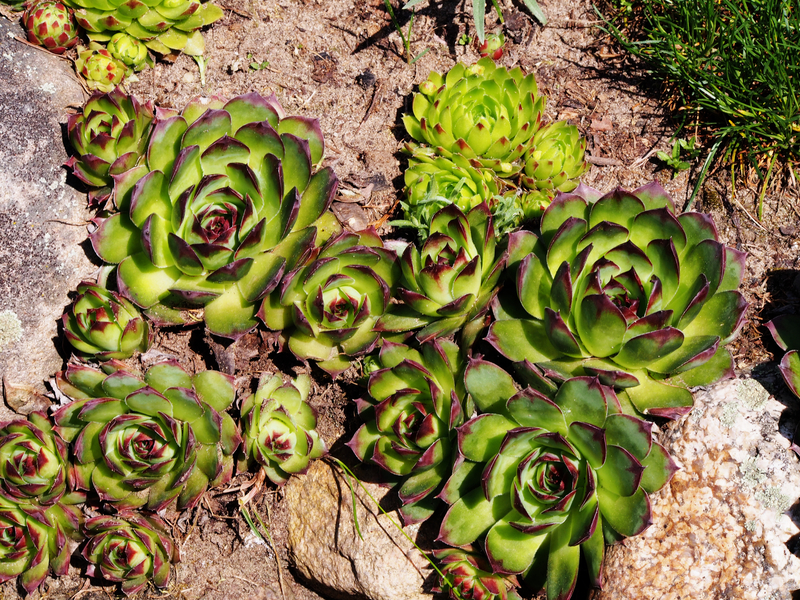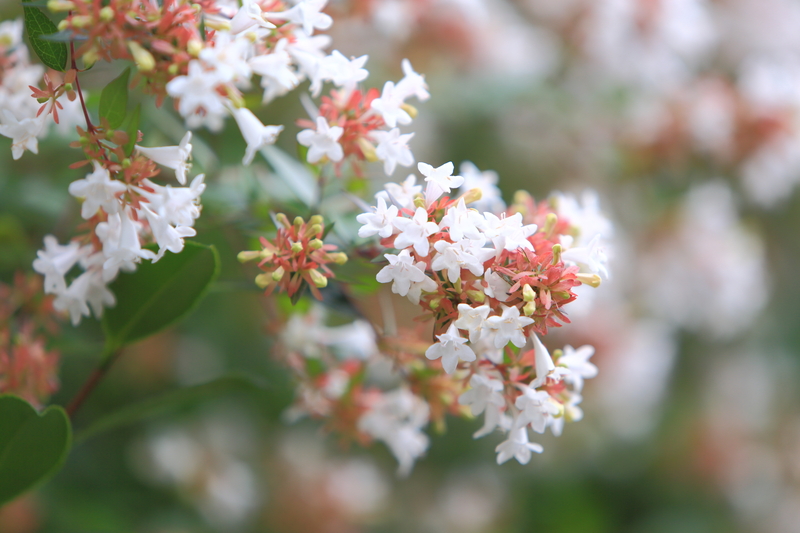The Science and Art of Hedge Trimming: Ideal Shapes and Strategies
Posted on 04/09/2025
The Science and Art of Hedge Trimming: Ideal Shapes and Strategies
Hedge trimming is more than just a garden chore; it's both a precise science and a creative art form. Achieving perfect hedges requires an understanding of plant biology, mastery of specialized techniques, and an eye for aesthetics. This comprehensive guide will explore the science and art of hedge trimming, focusing on ideal shapes, proven strategies, and professional tips to help your garden thrive and impress.
Understanding the Importance of Hedge Trimming
Hedges serve various purposes: they can create private outdoor spaces, reduce noise, and add architectural structure to landscapes. But achieving a healthy, beautiful hedge demands more than simply cutting back growth at random. Properly trimmed hedges offer these benefits:
- Maintain plant health by promoting vigorous growth and reducing disease risk
- Create neat, eye-catching boundaries for residential and commercial properties
- Enhance landscape design through distinct shapes, forms, and patterns
- Encourage flowering and fruit production in some hedge species
With both aesthetic beauty and plant vitality at stake, mastering the science and art of hedge trimming becomes essential for any passionate gardener or landscape professional.

The Science Behind Hedge Trimming: How Plants Respond
Understanding Plant Growth Patterns
Hedge plants, like all woody shrubs, grow through a process called apical dominance. The main shoot produces hormones that suppress the growth of side shoots. When you trim the tip of a stem, you alter the flow of these hormones, encouraging the plant to produce more lateral branches. This results in a denser and bushier appearance essential for a sleek, full hedge.
Key points to consider about plant growth:
- Lateral branches fill in gaps and create a robust structure
- Frequent light trimming produces a denser hedge compared to infrequent heavy cuts
- New growth is most vigorous during the start of the growing season
- Knowing your hedge species' specific growth habits helps determine the best trimming approach
Timing Your Hedge Trimming for Best Results
One crucial aspect of hedge trimming science is knowing when to trim. Different plants have slightly different requirements, but general guidelines include:
- Evergreen hedges (e.g., boxwood, yew): Best trimmed in late spring or early summer, with light shaping possible throughout the summer season.
- Deciduous hedges (e.g., hornbeam, privet): Trim ideally during the growing season, after new shoots are fully formed.
- Flowering hedges (e.g., forsythia, lilac): For spring bloomers, trim after flowering; for summer bloomers, trim in late winter or early spring.
Never trim hedges during periods of drought or extreme heat, as this can stress plants and slow their recovery.
The Art of Hedge Trimming: Shapes, Styles, and Design
The artistry of hedge trimming offers nearly endless possibilities. With a steady hand and a creative mind, you can transform ordinary shrubs into living sculptures. Whether your goal is a formal, geometric garden or a whimsical, cottage-style landscape, ideal hedge shapes play an essential role in design.
Classic Hedge Shapes
Traditional gardens often use straight, crisp lines and simple geometric forms. Among ideal hedge shapes, the following are most popular:
- Rectangular or Square Hedges: These provide clean lines and formality. Used commonly in parterre gardens and as property borders.
- Rounded Hedges: Soften hardscape edges or highlight entranceways. Uniform domes can be visually appealing and less prone to snow damage in winter climates.
- Tapered or Beveled Hedges: Also called "A-shaped," these are wider at the base than the top. This allows sunlight to reach the lower branches and prevents legginess.
- Free-form or Naturalistic Hedges: Emphasizes flowing lines and organic shapes, ideal for informal or wildlife-friendly gardens.
Creative and Artistic Hedge Designs
Experienced gardeners and topiary artists take hedge trimming a step further by creating:
- Topiary sculptures (animals, spirals, cones, and abstract forms)
- Patterned hedges for labyrinths and mazes
- Architectural "rooms" and green corridors in large landscapes
Whatever your aesthetic preference, remember that healthy plants and well-sharpened tools are essential to achieve crisp, clean cuts.
Strategies and Techniques for Effective Hedge Trimming
Choosing the Right Tools
Quality tools make a significant difference in the ease and quality of shaping hedges. For the best results in hedge trimming, invest in:
- Manual hedge shears: Perfect for precision cutting and smaller hedges
- Powered hedge trimmers: Ideal for rapid, even cuts in large or long hedges
- Pruning loppers: Essential for removing thick or woody stems
- Secateurs: Good for fine detail work, especially on intricate shapes
Always sharpen blades before use, and clean them to avoid spreading disease between plants.
Setting the Line: Marking and Measuring
Precision is key to shaping hedges beautifully. Here's how you can achieve professional results:
- String and Stakes: Run a taut string along the desired height and hold it in place with stakes. This creates a visible guideline as you work.
- Sticks or planks: Use flat boards for reference to create perfectly level tops and vertically flat sides.
- Templates: For curves or unique shapes, make a cardboard or wooden template to follow as you trim.
Trimming Techniques for Ideal Hedge Shapes
Follow these time-tested methods to master the science and art of hedge trimming:
- Start from the bottom: Always begin trimming at the hedge base and gradually work upwards. This prevents clippings from falling onto areas you've already finished.
- Taper your cut: For most hedges, shape the sides so they are slightly wider at the bottom than the top. This allows sunlight to reach all parts of the hedge, ensuring even growth.
- Use smooth, even strokes: Avoid jagged, quick snips which can leave the hedge ragged. Consistent technique produces a neater appearance.
- Regular light trims are better than infrequent heavy cuts. Trimming a few centimeters at a time encourages lush new growth and avoids "bare patches."
- Step back and review your work often: It's easy to lose perspective up close. Periodically stand back to check symmetry and alignment.
Common Mistakes in Hedge Trimming (And How to Avoid Them)
Even seasoned gardeners can stumble into trouble with hedge trimming techniques. Watch out for these pitfalls:
- Cutting at the wrong time: Trimming just before frost or during hot, dry spells stresses plants. Stick to recommended seasons.
- Neglecting the taper: Straight-sided or top-heavy hedges will shade their lower branches, causing thinning and bare spots.
- Using dull blades: Blunt shears or trimmers crush stems, inviting disease and causing untidy regrowth.
- Over-pruning: Removing too much foliage at once weakens plants and can prevent proper recovery.
- Ignoring plant species: Not all hedges respond the same way. Know your species' habits before you trim.
Seasonal Strategies for Optimal Hedge Health
The science of hedge care changes with the seasons. To keep your hedges looking and growing their best, tailor your approach:
Spring
- Make the first trim after new growth appears
- Remove any winter-damaged or diseased branches
Summer
- Regular, light trims for shape maintenance
- Mulch and water during dry periods to reduce stress
Autumn
- Last shaping trim before frost arrives
- Clear away fallen leaves and debris around the base
Winter
- Avoid heavy pruning, except for emergency removal of broken branches
- Protect tender species with burlap or windbreaks in exposed areas
Choosing Plants for Ideal Hedge Trimming Results
Selecting the right hedge species is vital for both scientific hedge formation and artistic styling. Popular choices for diverse climates and designs include:
- Boxwood (Buxus): Dense, slow-growing, tolerates frequent shaping - ideal for formal gardens and topiary
- Yew (Taxus): Evergreen, resilient, long-lived; perfect for architectural forms
- Privet (Ligustrum): Fast-growing, easy to shape, suits privacy hedges
- Holly (Ilex): Offers glossy leaves and berries; excellent for festive displays and wildlife gardens
- Hornbeam (Carpinus betulus): Deciduous, retains leaves through winter, forms thick screens
- Laurel (Prunus laurocerasus): Large leaves, vigorous growth, requires regular maintenance
Eco-Friendly and Sustainable Hedge Trimming
Modern hedge trimming strategies emphasize sustainability. Consider these eco-friendly tips:
- Use electric or battery-powered trimmers to reduce fuel emissions
- Leave clippings as mulch or compost them to enrich soil health
- Trim outside of nesting seasons to protect wildlife, especially birds
- Incorporate native species for low-maintenance, drought-resistant, and biodiverse hedges
Pro Tips for Next-Level Hedge Trimming
- Practice regularly - consistency is more important than speed
- Keep safety foremost: always wear gloves, goggles, and sturdy shoes
- Try creative patterns on a small area before scaling up bold designs
- If unsure, consult with a professional for advice or periodic pruning
- Regularly inspect for pests or diseases to catch problems early

FAQs About Hedge Trimming
How often should hedges be trimmed?
Most hedges benefit from trimming at least 1-2 times per year, though fast-growing varieties may require monthly shaping during the growing season.
What is the best shape for a hedge?
Tapered or beveled sides are recommended as the best hedge shape for plant health, as they allow sunlight to reach all parts of the hedge.
Should hedge clippings be removed?
Yes, remove large amounts to avoid smothering the hedge base. Small amounts can be left as mulch or composted to enrich your garden soil.
When is the worst time to trim hedges?
Avoid late fall or winter pruning (except for urgent repairs) and extreme heat waves to prevent stress and damage to the plants.
Conclusion: Make Your Garden Stand Out with Expert Hedge Trimming
Mastering the science and art of hedge trimming blends knowledge, skill, patience, and creativity. By understanding plant biology, employing ideal hedge shapes, and using modern tools and sustainable practices, you can achieve lush, beautiful hedges that are both healthy and visually stunning.
Whether maintaining a stately boxwood border or experimenting with topiary art, the right trimming strategies will turn your hedges into a signature feature of your outdoor sanctuary. Regular care, attention to timing, and a commitment to best practices ensure your hedges remain a source of pride for years to come.
Invest in your garden's future--begin perfecting your hedge trimming technique today!

